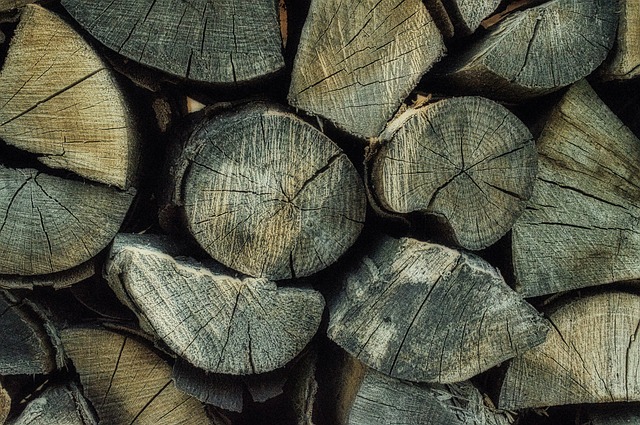Glulam (glued laminated timber) is an innovative, sustainable construction material with exceptional strength and design flexibility. Its eco-friendly profile, derived from responsibly managed forests, offers a lower carbon footprint compared to traditional lumber. Glulam's versatility enables complex geometric designs, while its durability minimizes waste and long-term maintenance needs. This advanced material is suitable for various applications, including bridges and building frames, with proven performance in spanning heavy loads efficiently. As the demand for sustainable infrastructure grows, glulam's unique properties position it as a leading candidate for environmentally conscious construction projects, despite challenges like standardization and wind load optimization.
Glulam, a modern wonder material, is revolutionizing sustainable infrastructure. This innovative construction technique utilizes laminated timber, enhancing structural integrity while reducing environmental impact. In an era of escalating climate challenges, glulam offers a compelling solution for eco-friendly and long-lasting buildings. From robust bridges to energy-efficient structures, this article explores the multifaceted advantages of glulam, delving into its environmental benefits, technical superiority over traditional materials, real-world applications, and future potential in shaping a greener infrastructure landscape.
- What is Glulam and Why is it Important for Sustainable Infrastructure?
- The Environmental Benefits of Using Glulam in Construction
- Technical Advantages of Glulam over Traditional Building Materials
- Real-World Applications of Glulam in Sustainable Infrastructure Projects
- Future Prospects and Challenges for Glulam in the Infrastructure Sector
What is Glulam and Why is it Important for Sustainable Infrastructure?
Glulam, short for glued laminated timber, is an innovative structural material made by gluing together several layers of sawn timber in cross-oriented layers. This engineering marvel combines strength and stability with exceptional design flexibility. By orienting each layer in opposite directions, glulam creates a highly efficient structure that can span significant distances without intermediate supports.
In the context of sustainable infrastructure, glulam is gaining prominence as a responsible alternative to traditional lumber. Its production involves less energy and generates fewer greenhouse gas emissions compared to conventional building materials. Furthermore, glulam solutions offer unique design capabilities, enabling architects and engineers to create complex geometries that would be challenging or impossible with solid lumber. This versatility allows for more creative and sustainable building designs while promoting the use of a renewable resource – timber. Compared to traditional lumber, glulam’s superior strength-to-weight ratio translates into less material requirements, reducing overall environmental impact.
The Environmental Benefits of Using Glulam in Construction
The use of glulam (glulam structural advantages) in construction offers a compelling array of environmental benefits. One of its key strengths lies in its sustainable nature, as glulam is derived from carefully selected and managed forests, promoting responsible forestry practices. This renewable material has an incredibly low carbon footprint compared to traditional building materials, contributing to reduced greenhouse gas emissions (glulam architectural elements).
Furthermore, glulam’s durability and longevity make it an eco-friendly choice. Its resistance to rot, pests, and decay reduces the need for frequent replacements or repairs. Glulam construction techniques also allow for precise manufacturing, minimizing waste on site, and enabling efficient use of materials. This not only reduces the project’s overall environmental impact but also offers cost savings and faster construction times.
Technical Advantages of Glulam over Traditional Building Materials
Glulam offers a myriad of technical advantages over traditional building materials, making it an attractive option for sustainable infrastructure. Its unique manufacturing process combines multiple layers of wood laminates, resulting in exceptional strength and stability. This innovative technique enhances glulam’s natural resistance to moisture, pests, and rot, ensuring its longevity and reducing the need for frequent replacements or repairs.
Moreover, glulam’s precise engineering allows for the creation of complex geometric shapes and unique designs that were previously challenging to achieve with conventional materials. Glulam structural integrity testing has demonstrated its superior performance in bearing heavy loads, making it ideal for constructing resilient and sustainable structures. This versatile material is not only environmentally friendly but also offers cost-effective solutions for both commercial and residential projects.
Real-World Applications of Glulam in Sustainable Infrastructure Projects
The versatility of glulam has led to its widespread adoption in sustainable infrastructure projects worldwide. In the realm of bridge building, for instance, glulam applications have been instrumental in constructing environmentally friendly and aesthetically pleasing spans. Its ability to span long distances with minimal support has made it a game-changer in designing modern, efficient bridges that reduce material waste and construction time.
Beyond bridges, glulam’s real-world uses extend to various structural components, from building frames to roof trusses. A key advantage lies in its cost-effectiveness when compared to traditional methods, as glulam offers a competitive price point without compromising structural integrity. Rigorous glulam structural integrity testing has proven its strength and durability, making it a reliable choice for projects seeking both sustainability and long-term performance.
Future Prospects and Challenges for Glulam in the Infrastructure Sector
The future of glulam in sustainable infrastructure looks promising, as the industry continues to evolve and embrace innovative building solutions. With growing environmental consciousness, there is an increasing demand for eco-friendly materials, making glulam a prime candidate. Its unique properties—such as strength, durability, and reduced carbon footprint—position it as a viable alternative to conventional construction methods. Advanced glulam construction techniques allow for complex geometric designs, opening up new possibilities in architectural expression.
However, challenges remain. Standardization and quality control are essential aspects that require attention. Ensuring consistent performance across different glulam products is crucial for widespread adoption. Additionally, while glulam design considerations for wind load have been explored, further research is needed to optimize its use in extreme weather conditions. Exploring eco-friendly glulam alternatives is another avenue worth pursuing, as the industry seeks to minimize environmental impact without compromising structural integrity.
Glulam is revolutionizing sustainable infrastructure, offering a compelling combination of environmental benefits and structural advantages. As the world shifts towards greener construction practices, glulam’s role in reducing carbon footprints, minimizing waste, and promoting efficient material use becomes increasingly significant. Despite challenges, the future looks promising for this versatile material, with growing adoption in real-world projects indicating its potential to shape a more sustainable built environment.







